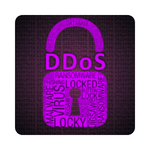Top 3 Tricks Cybercriminals Use to Hack Into Your Business Network
March 16th, 2022 | 3 min. read

Cybercriminals never feel guilty. Hacking into a business's network and walking away with thousands of dollars it's a badge of honor for them. They don't mind that they've ripped off an honest business owner, and they don't care how it will impact the employees whose livelihoods they compromised.
If that gets your blood boiling, then get a load of this: cybercriminals are 99.95% more likely to get away with it. That's according to the World Economic Forum's 2020 Global Risk Report. To add salt to the wound, many of them are even happy to share the tricks and schemes they use to break into business networks. That's how confident they are because they believe there's a sucker born every day.
The responsibility now falls on all of us, both business owners and employees alike, to make sure these cyber thugs don't get what they want. Or else, they'll have their way with everything we worked so hard to build. One of the best ways to do that is to educate ourselves and raise awareness within our organizations. Secondly, stay up-to-date with the latest technology designed to combat cyber-attacks.
At ITS, we've helped hundreds of businesses bolster their cybersecurity and protect their networks. In this article, we'll share with you some of the schemes cybercriminals use to get into your network to wreak havoc. Hopefully, after reading this, you'll be more aware of their tactics and be better able to spot them.
Top 3 Tricks Used by Cybercriminals
Here are the top three tricks of the trade cybercriminals use to get their hands on your money:
1. Ransomware
![]() Ransomware is a very common form of malware. Once it infects your device, it will begin encrypting your files. Or it may completely block you from accessing your computer altogether. You'll then get a full-screen message saying: Pay up or never access your files again. Some ransomware programs will even threaten to delete all of your files if you fail to comply.
Ransomware is a very common form of malware. Once it infects your device, it will begin encrypting your files. Or it may completely block you from accessing your computer altogether. You'll then get a full-screen message saying: Pay up or never access your files again. Some ransomware programs will even threaten to delete all of your files if you fail to comply.
Ransomware can sneak onto your network and into your computers in a number of different ways:
Fake Ads
 These ads can appear like legitimate advertising material from familiar businesses, or they could have really tempting offers. Also, they can appear on social media sites and well-known websites. If someone clicks a compromised ad or pop-up, it will initiate a file download then install the ransomware. It's going to be quick and confusing. This is where anti-malware and anti-ransomware come in very handy.
These ads can appear like legitimate advertising material from familiar businesses, or they could have really tempting offers. Also, they can appear on social media sites and well-known websites. If someone clicks a compromised ad or pop-up, it will initiate a file download then install the ransomware. It's going to be quick and confusing. This is where anti-malware and anti-ransomware come in very handy.
Phishing
![]() Phishing is an attempt by a cybercriminal to pose as a legitimate institution or a colleague to lure you into either clicking a link or providing them sensitive data. The link or file attached to such email would install the ransomware when clicked. Or, they could use social engineering tactics or clone websites to gain your login credentials then breach your defenses that way.
Phishing is an attempt by a cybercriminal to pose as a legitimate institution or a colleague to lure you into either clicking a link or providing them sensitive data. The link or file attached to such email would install the ransomware when clicked. Or, they could use social engineering tactics or clone websites to gain your login credentials then breach your defenses that way.
Hidden Files On Thumb Drives
![]() Another method hackers use to get ransomware on your system is through the use of thumb drives. It happens way too often; someone brings a thumb drive from home and uses it in the office. Unbeknownst to them, their thumb drive has a malicious file hidden on it. When the infected thumb drive is inserted into a networked machine, the file is installed.
Another method hackers use to get ransomware on your system is through the use of thumb drives. It happens way too often; someone brings a thumb drive from home and uses it in the office. Unbeknownst to them, their thumb drive has a malicious file hidden on it. When the infected thumb drive is inserted into a networked machine, the file is installed.
No matter how the ransomware gets onto your devices, the result is basically the same. The cybercriminals will prevent you from getting to your files then extort you for money to get them back.
 2. DDoS Extortion
2. DDoS Extortion
DDoS is short for distributed denial of service. These kinds of attacks are a relatively easy way for hackers to take down your business's online presence and wreak havoc on your network. These attacks mimic online users and essentially "flood" your network with access requests. Basically, it's as if millions of people were trying to access your website at once.
That can overload your network and bring it down. The hackers can continue the attacks until you decide to pay up. If you don't, the hackers will do everything they can to keep you offline in an attempt to disrupt your operations. If you rely on the internet traffic for your business, this can be devastating. That's why many businesses end up paying.
 3. Direct Attacks
3. Direct Attacks
Some cybercriminals like to get their hands dirty and attack your network themselves. While many hackers rely on bots or malware to do the work for them, some will see if they can break through your network security more directly. If successful at breaking in, they can target specific files on your network, such as critical business or customer data.
Once they get your valuable data, they may let you know they have it and ask for money in return. Sometimes they won't tell you anything. Instead, they will simply sell the data on the deep web. Either way, it puts your business in a bad position. A criminal has walked away with sensitive information that could potentially ruin your reputation in your industry or cause clients to pursue legal action against you.
While these tricks can be difficult to spot, there are ways to defend yourself against them. The answer is to take preventative measures and invest in your IT and cybersecurity.
Ready to Defend Against Cyber-Attacks?
 The number of cyber-attacks on small businesses has grown exponentially in the last few years. The best way to defend against them is to improve your knowledge and raise awareness across your organization. Stay up-to-date with the latest technology designed to combat cyber-attacks. If you do, you can change the outcome.
The number of cyber-attacks on small businesses has grown exponentially in the last few years. The best way to defend against them is to improve your knowledge and raise awareness across your organization. Stay up-to-date with the latest technology designed to combat cyber-attacks. If you do, you can change the outcome.
At ITS, we've helped our clients keep their technology secure and up-to-date for almost 20 years. If you want to learn more, check out our video on the 15 ways you can protect your business from cyber-attacks.
Mark Sheldon Villanueva has over a decade of experience creating engaging content for companies based in Asia, Australia and North America. He has produced all manner of creative content for small local businesses and large multinational corporations that span a wide variety of industries. Mark also used to work as a content team leader for an award-winning digital marketing agency based in Singapore.
Topics:
